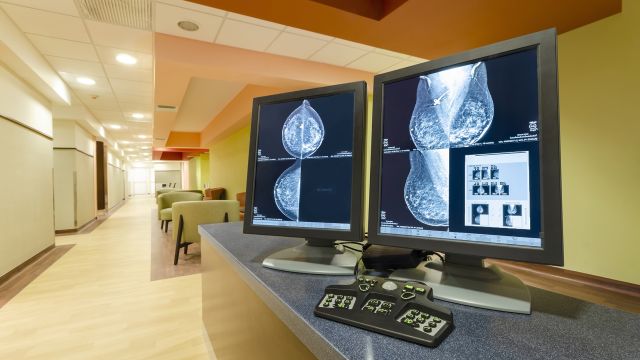As healthcare researchers have learned more about the biology and genetics of breast cancer, they have learned new ways of categorizing breast cancers. Two pieces of information that healthcare providers will look for while diagnosing breast cancer are hormone-receptor-status and HER2 status.
Hormone receptors are proteins that are found on the surface of some breast cancer cells. There are two types of hormone receptors that are found on the surface of some breast cancers—estrogen receptors (ER) and progesterone receptors (PR). Depending on the type, these proteins attract the hormones estrogen and progesterone, and allow those proteins to attach to cancer cells. The cancer cells can use these proteins to promote the growth and spread of more cancer cells.
HER2 (human epidermal growth factor receptor 2) is a different type of protein that can also promote the growth and spread of some cancer cells. Cancer cells that make too much of this protein will attract growth hormones to the cell. The cancer cells will use these growth hormones to promote their division and spread.
Determining the hormone receptor status and HER status involves a biopsy (taking a tissue sample of a breast tumor), which is sent to a lab for testing. Testing for HER2 status and hormone-receptor status helps healthcare providers determine what treatments might be effective or ineffective against a particular cancer.
Triple-negative breast cancer (TNBC) is breast cancer that is ER-negative, PR-negative, and HER2-negative.
Treating TNBC
Receiving the news that breast cancer is triple-negative may feel disheartening for some—triple-negative cancer tends to be aggressive, and treatment with anti-cancer drugs that target HER2 receptors and hormone receptors are unlikely to be effective. However, there are other effective treatment options for TNBC and more therapies are becoming available.
A treatment plan for triple-negative breast cancer may involve a combination of chemotherapy, radiation therapy, and surgery—though the specific variations of these therapies will depend on a number of factors about the cancer and the person who has cancer. It is important to remember that not every therapy is right for every person and there is never a guarantee that a therapy will work.
Because each case of breast cancer is different, treatment is individualized—when putting together a treatment plan, a healthcare team will consider factors that include (but are not limited to) a person’s age, overall health, medical history, and preferences, as well as the type of cancer, the stage, the size and locations of the tumor, symptoms caused by the cancer, and any cancer treatments that have been used in the past.
A treatment plan may also include some of the newer therapies for triple negative breast cancer. In 2019, the Food and Drug Administration (FDA) approved the first cancer regimen for TNBC that includes an immunotherapy. The immunotherapy drug does not target cancer cells directly, but helps the immune system recognize and attack cancer cells. It targets tumors that are positive for a protein called PD-L1 and is used in combination with a chemotherapy drug.
In 2020, the FDA approved the first targeted therapy for TNBC. This therapy works by attaching to a protein found in the cell membrane of some cancer cells, disrupting the cancer's ability to function and delivering an anti-cancer agent into those cells.
People with TNBC may also consider participating in a clinical trial, which may allow access to therapies that are not yet available as part of a standard treatment regimen.






